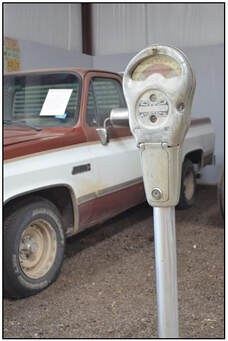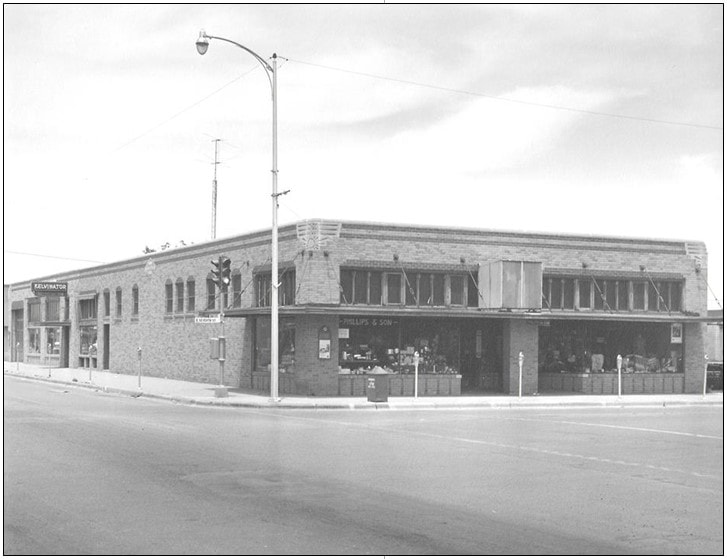Parking Meters were Source of Revenue
 Parking meter on display at Window on the Plains Museum
Parking meter on display at Window on the Plains Museum
Parking meters along the business streets of most towns were a common sight for many years. Today, they are things of the past.
Parking meters were the brainchild of Carlton C. Magee, publisher of the Oklahoma News and was head of the Chamber of Commerce Traffic Committee. Merchants were complaining that parking spaces were being used by workers who left their cars in the same spot all day, limiting the number of spaces available for shoppers. A survey showed that 80 percent of the spaces were those workers, leaving only 20 percent for shoppers.
This was a problem across America as more and more cars were on the roads.
Magee began working with engineering professors, Holger George Thuesen and Gerald A. Hale, to design a parking meter. The world's first parking meter was installed in Oklahoma City on July 16, 1935. The meter was on the corner of what was then First Street and Robinson Avenue. Magee received a patent for this meter on May 24, 1938.
Production of meters started in 1936 and expanded until the mid-1980's.
Most meters required pennies to work for a few minutes, some would take nickels for a longer period. The meters had a coin acceptor, a dial to engage the mechanism and a pointer and flag to show expiration of time.
This same design lasted more than 40 years with a few minor changes. A digital version was introduced in the mid-1980's.
With the introduction of parking garages, spaces for downtown parking were more available, but, today, meters have been removed in many cities.
Dates are not available for when meters were installed in Dumas, or when they were removed. Some "old-timers" think the installation was in the early to mid-1940's, others think it was in the mid-1950's. Dates could not be verified at the city offices.
Parking meters were the brainchild of Carlton C. Magee, publisher of the Oklahoma News and was head of the Chamber of Commerce Traffic Committee. Merchants were complaining that parking spaces were being used by workers who left their cars in the same spot all day, limiting the number of spaces available for shoppers. A survey showed that 80 percent of the spaces were those workers, leaving only 20 percent for shoppers.
This was a problem across America as more and more cars were on the roads.
Magee began working with engineering professors, Holger George Thuesen and Gerald A. Hale, to design a parking meter. The world's first parking meter was installed in Oklahoma City on July 16, 1935. The meter was on the corner of what was then First Street and Robinson Avenue. Magee received a patent for this meter on May 24, 1938.
Production of meters started in 1936 and expanded until the mid-1980's.
Most meters required pennies to work for a few minutes, some would take nickels for a longer period. The meters had a coin acceptor, a dial to engage the mechanism and a pointer and flag to show expiration of time.
This same design lasted more than 40 years with a few minor changes. A digital version was introduced in the mid-1980's.
With the introduction of parking garages, spaces for downtown parking were more available, but, today, meters have been removed in many cities.
Dates are not available for when meters were installed in Dumas, or when they were removed. Some "old-timers" think the installation was in the early to mid-1940's, others think it was in the mid-1950's. Dates could not be verified at the city offices.
A story in the Sunday, July 6, 1958, newspaper edition is headlined "Free Parking For $ Day Extended." The story goes, "Come on into Dumas tomorrow, folks... find you a convenient parking space... and shop as long as you like without fear of getting a ticket!"
"Free parking, one of the most popular features ever added to Dumas Dollar Day, was extended by the Dumas city commission recently at the request of the Chamber of Commerce's Retail Trade Committee."
Joe Walsh, chairman of the retail trade group, said, "The hooded parking meters had created so much fresh, new interest in Dollar Day that his group has asked for the once-a-month free parking on an indefinite basis."
The story went on to report, "The free parking allowed shoppers in Dumas the opportunity to browse and buy as long as they desired... without periodic interruptions and hurried trips to "fee" a parking meter."
"Meter Maids" were hired by police departments to monitor the meter and write tickets for offenders. Often shoppers would return to their cars and find a ticket from the "Meter Maid" and they would have to go to the City Corporation Court to pay the parking fine. The museum has a receipt for one parking fine, paid by Jay B. Funk in the amount of $1, paid on January 8, 1976. It was signed by Jackie Funk, his wife, who was employed by the Corporation Court at that time.
Whatever the dates were, the meters added to the revenue for the city and helped regulate downtown parking.
"Free parking, one of the most popular features ever added to Dumas Dollar Day, was extended by the Dumas city commission recently at the request of the Chamber of Commerce's Retail Trade Committee."
Joe Walsh, chairman of the retail trade group, said, "The hooded parking meters had created so much fresh, new interest in Dollar Day that his group has asked for the once-a-month free parking on an indefinite basis."
The story went on to report, "The free parking allowed shoppers in Dumas the opportunity to browse and buy as long as they desired... without periodic interruptions and hurried trips to "fee" a parking meter."
"Meter Maids" were hired by police departments to monitor the meter and write tickets for offenders. Often shoppers would return to their cars and find a ticket from the "Meter Maid" and they would have to go to the City Corporation Court to pay the parking fine. The museum has a receipt for one parking fine, paid by Jay B. Funk in the amount of $1, paid on January 8, 1976. It was signed by Jackie Funk, his wife, who was employed by the Corporation Court at that time.
Whatever the dates were, the meters added to the revenue for the city and helped regulate downtown parking.
